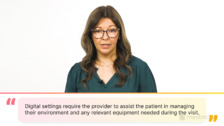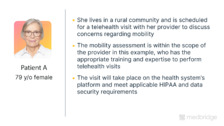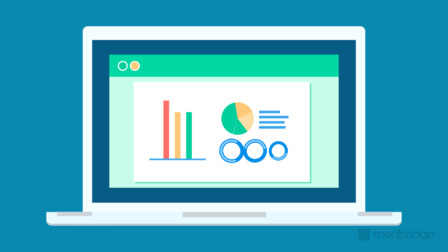Advanced Telehealth Techniques: Translating Clinical Skills to Telehealth
Presented by Anna DeLaRosby, Julie Mulcahy, and Todd Norwood
12-Month Subscription
Unlimited access to:
- Thousands of CE Courses
- Patient Education
- Home Exercise Program
- And more
As telehealth continues to grow, physical therapists must adapt their clinical skills to provide high-quality remote care. This course explores advanced telehealth techniques, equipping providers with the tools to assess and treat patients effectively in a virtual setting. Participants will learn how to standardize evaluations, ensure reproducibility, and apply decision-making frameworks for selecting appropriate telehealth procedures. The course also delves into the use of self-mobilization techniques, including patient instruction, contraindications, and the integration of tools to optimize treatment outcomes. By mastering these skills, physical therapists can enhance patient care, ensuring telehealth is a viable and effective alternative to in-person visits.
Learning Objectives
- Explain the conditions that must be met to provide safe digital care
- Assess the feasibility, reliability, and validity of a therapeutic procedure for a patient during an evaluation
- Standardize the performance of evaluation techniques using nonmodifiable variables in the patient’s environment to increase reproducibility of the physical therapy assessment
- Complete valid, reliable, and reproducible special tests of the upper quarter, lower quarter, and spine during telehealth evaluations
- Identify absolute and relative contraindications to self-mobilization techniques
- Utilize direct force, counterpressure, stabilizing force, and tensioning force in self-mobilization techniques during a telehealth encounter
- Utilize a variety of props and tools, such as bands and foam rollers, to produce external overpressure with mobilizing movements
- Instruct a patient through a self-mobilization technique, including equipment requirements, environment setup, and force generation
Meet your instructors

Anna DeLaRosby
Anna has been a physical therapist since receiving her doctorate in physical therapy in 2008 and loves all things PT. Anna became certified in mechanical diagnosis and therapy in 2012, and in 2014, she became a board-certified orthopedic clinical specialist. Anna is the clinical program manager for Physera Physical Therapy…

Julie Mulcahy
Julie Mulcahy received her doctorate in physical therapy from the University of Michigan. For the past 20+ years, she has specialized in orthopedics, sports medicine, and women’s health. She obtained her Certificate of Achievement in Pregnancy and Postpartum Physical Therapy (CAPP-OB) in 2021 and her LAMP Institute for…

Todd Norwood
Todd received his doctorate in physical therapy from the University of Southern California and his BA in human biology from Stanford University. He is a board-certified clinical specialist in both orthopedic physical therapy and sports physical therapy and is a fellow of the American College of Healthcare Executives. Todd is…
Chapters & learning objectives

1. Framework: Translating Clinical Skills to Telehealth
This chapter introduces the evolving landscape of digital healthcare and presents a structured decision-making framework for adapting clinical skills to telehealth. Participants will explore the challenges and solutions associated with virtual assessments, including patient environments, communication barriers, and the absence of hands-on evaluation. By establishing the essential conditions for digital care, providers can confidently deliver safe and effective telehealth services.

2. Applying the Framework: Case Example
Through a clinical case study, this chapter illustrates the practical application of the telehealth decision-making framework. Participants will examine how traditional assessments can be modified for virtual care while maintaining reliability and validity. The case study highlights the importance of adaptability, environmental considerations, and provider confidence in digital procedures to ensure accurate clinical decision-making.

3. Translating Manual Techniques to Digital Therapy
In this chapter, participants will learn how to translate manual therapy techniques into self-mobilization strategies for telehealth. The session covers the benefits of self-mobilization, contraindications, and methods for selecting appropriate mobilization techniques. Emphasis is placed on force application, therapeutic tools, and patient instruction to optimize outcomes. By incorporating these approaches, providers can offer comprehensive care remotely while maintaining treatment efficacy.
More courses in this series

Advanced Telehealth Techniques: Translating Clinical Skills to Telehealth
Anna DeLaRosby, Julie Mulcahy, and Todd Norwood

Advanced Telehealth Techniques: Evaluation and Intervention Techniques of the Spine
Anna DeLaRosby, Julie Mulcahy, and Todd Norwood

Advanced Telehealth Techniques: Evaluation and Intervention Techniques of the Upper Extremity
Anna DeLaRosby, Julie Mulcahy, and Todd Norwood

Advanced Telehealth Techniques: Evaluation and Intervention Techniques of the Lower Extremity
Anna DeLaRosby, Julie Mulcahy, and Todd Norwood